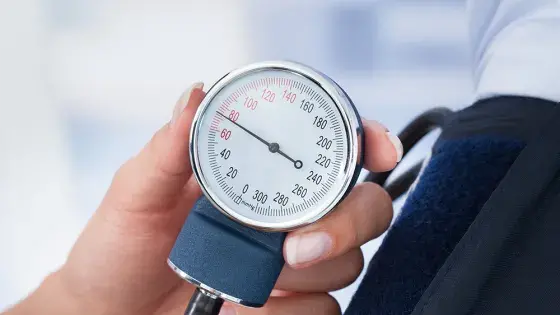With the everyday pressures of life, understanding why it’s important to know your blood pressure numbers and taking the time to get them measured isn’t always a priority. However, did you know that getting a blood pressure check is the first step to preventing heart attacks and strokes?
High blood pressure is a major cause of these diseases but usually has no symptoms until it’s too late, which is why it’s known as ‘the silent killer’. Knowing your numbers means you can start making healthy lifestyle changes, or start taking medicines, if you need them, to bring your blood pressure down to a healthy level. So, it’s essential to make the time to check your blood pressure to see if it’s under control.
Understanding blood pressure (BP)
Your heart is a muscular pump – it pumps blood around your body using a system of blood vessels. BP is created by the force of your heart pumping blood out and the resistance of the vessel walls through which the blood passes.
When you have your blood pressure measured, you will be given two numbers, a top number and a bottom number:
- Systolic blood pressure. This is the first, or top, number. This is the highest level your blood pressure reaches when your heart beats, forcing blood around your body.
- Diastolic blood pressure. The second number, or bottom number, is the lowest level your blood pressure reaches as your heart relaxes between beats.
Blood pressure is measured in millimetres of mercury (mmHg). If the first number is 120 and the second number is 80, this would be written as 120/80mmHg, and you’d call it ‘120 over 80’.
High blood pressure (hypertension)
High BP is when your blood pushes against your blood vessel walls with too much force, putting a strain on your heart and blood vessels. High BP is a reading greater than 140/90 mmHg.
Around a third of people in the UK have high blood pressure, but most don’t know it. It is often related to unhealthy lifestyle habits, such as smoking, drinking too much alcohol, being overweight and not exercising enough.
Left untreated, high blood pressure can increase your risk of developing a number of serious long-term health conditions, including coronary heart disease. You also risk damaging the blood vessels in your kidneys or eyes.
Low blood pressure (hypotension)
A blood pressure reading below 90/60mmHg is considered low blood pressure. Only one of the numbers needs to be at this level or lower to count as low blood pressure.
Low blood pressure is less common and if your blood pressure is naturally low, this probably won’t cause you any problems and won’t need treating, but it can cause dizziness and fainting in some people. In fact, the lower your blood pressure, the lower your risk of heart disease and stroke.
Ideal blood pressure is considered to be between 90/60and 120/80. But most adults in the UK have BP readings between 120/80 to 140/90. If your BP is within this range, you should be taking steps to bring it down or to stop it rising any further.
You can find information on reducing your blood pressure here: Reduce your Blood Pressure | Health Partners Group
Monitoring your blood pressure
Blood pressure machines vary, but they're all a type of measuring device, which often have an arm cuff attached to it. The cuff is usually wrapped around your upper arm and filled with air until it feels tight. This can feel uncomfortable but it only lasts a few seconds.
It's important to relax and not talk during this time, because this is when your blood pressure is measured. You should have a blood pressure test if you're worried about your blood pressure at any time.
If you're over 40, you can have this test done as part of a NHS Health Check, which is offered to adults in England aged 40 to 74 every 5 years.
If you have been diagnosed with high or low blood pressure, or you have a high risk of developing either, you may need more frequent checks of your blood pressure.
You can get your blood pressure tested at a number of places, including:
- your local GP surgery
- some pharmacies
- some workplaces
- at home
You can only check your blood pressure in a clinic every so often, so keeping an eye on your numbers at home can give you and your medical professional a more complete picture of what your blood pressure is like from day to day, and how well your treatments or lifestyle changes are working.
Blood Pressure UK have a useful online hub where you can find help and information on taking your blood pressure at home: Blood Pressure UK
If you have a recent blood pressure reading, the NHS has a tool to help you understand it: Check your blood pressure reading - NHS (www.nhs.uk). You should not use this tool to diagnose any symptoms and if you're worried about your blood pressure, check with your medical professional.
References:

